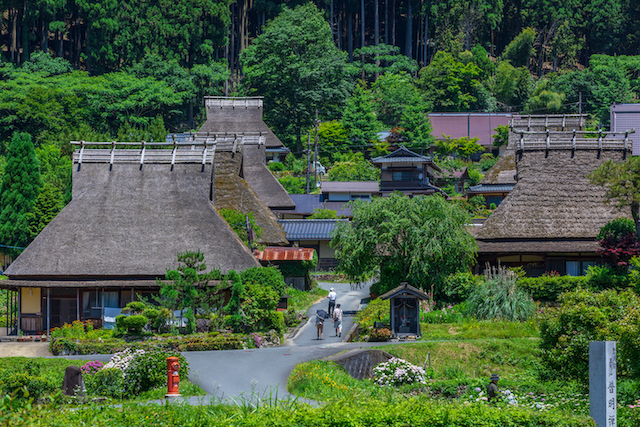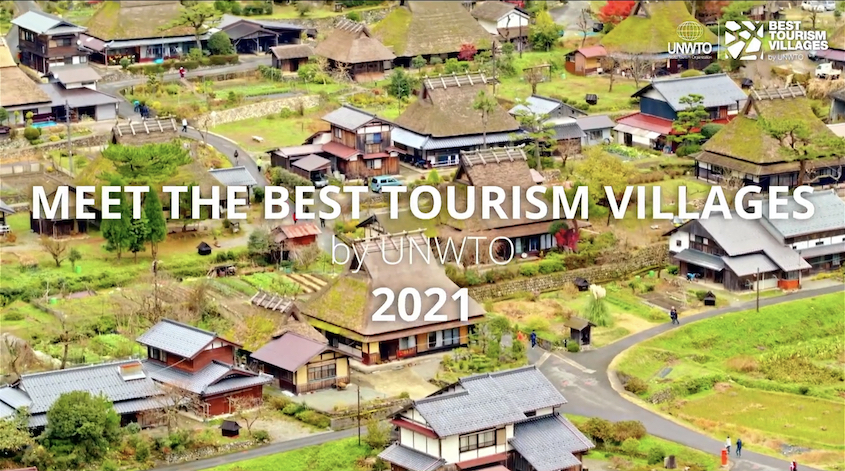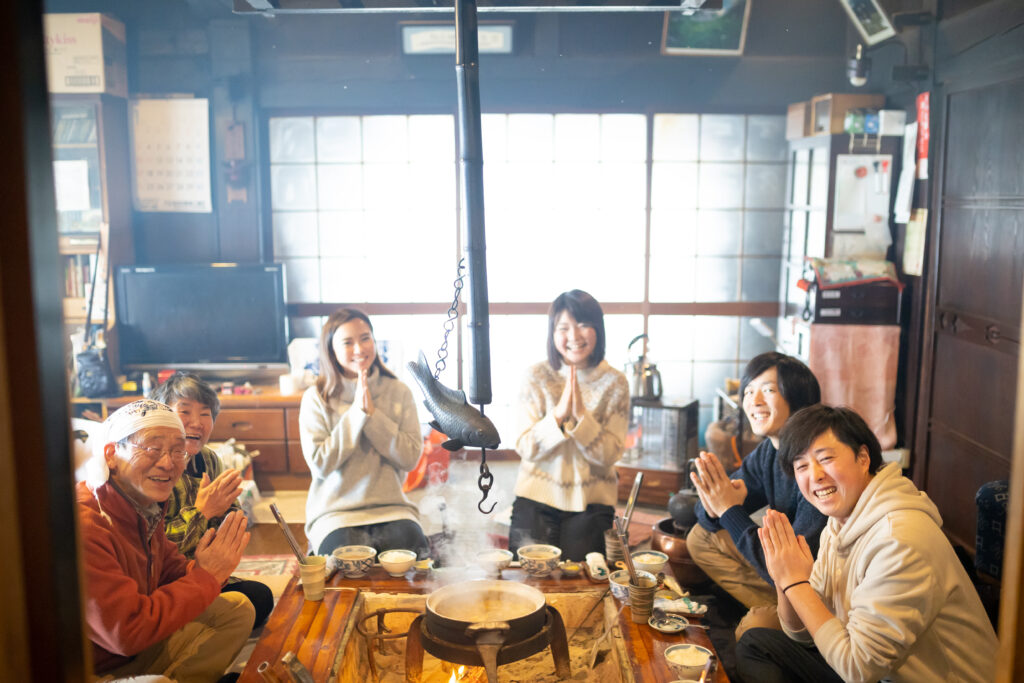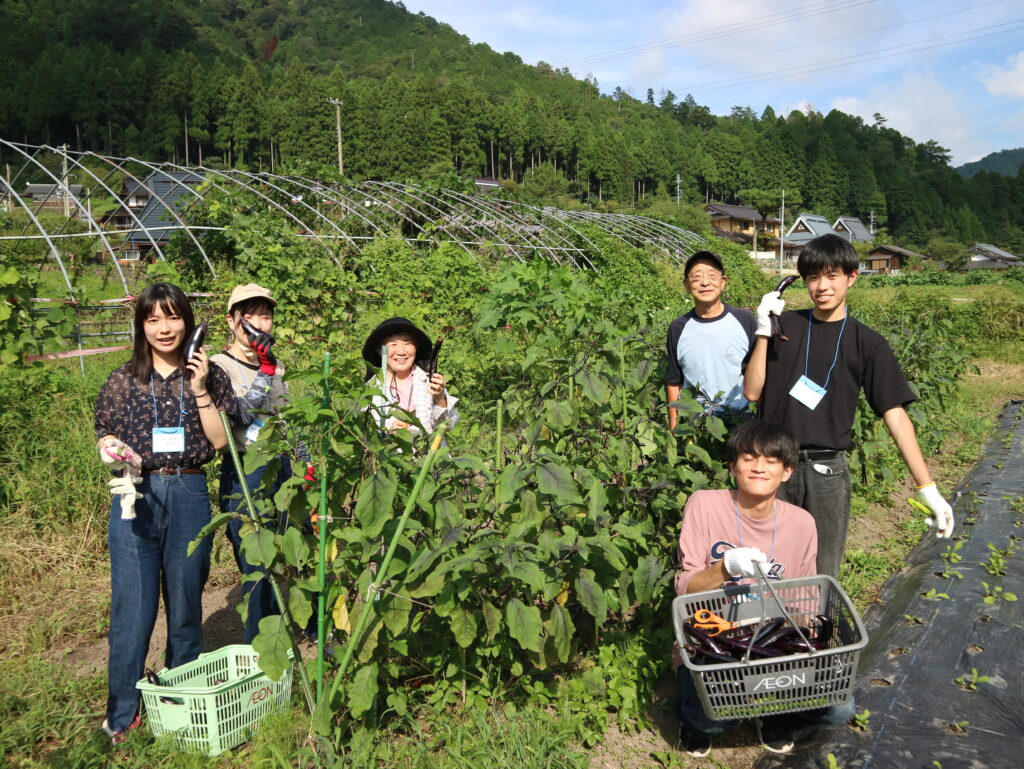Life in Miyama

The town of Miyama is located in a mountainous, once largely isolated area roughly 50 kilometers north of the city of Kyoto. The town encompasses dozens of small villages and hamlets across the Yura River valley with a combined population of around 3,500. Miyama is famous for the traditional thatched-roof houses that were once common throughout the area and remain in residential use in places such as the historic Kayabuki no Sato village.
Miyama is no longer as secluded as in past centuries and can be easily reached by train and bus from Kyoto. The near-to-nature, sustainable, and community-focused way of life long practiced in the area remains very much alive. Much of the food produced in Miyama is consumed locally, natural resources are managed with future generations in mind, and customs and rituals are maintained by local communities. The town’s residents are committed to protecting this lifestyle while sharing it with travelers through a variety of experiential programs.
Miyama has been recognized for encouraging environmentally conscious living through safeguarding its heritage, including practices such as traditional agriculture. In addition, the town is internationally noted for its sustainability initiatives. In 2021, Miyama was named one of the world’s Best Tourism Villages by the United Nations World Tourism Organization (UNWTO) in recognition of the municipality’s efforts to promote sustainable tourism that preserves culture, traditions, and biodiversity while empowering its residents.

Farmhouse Stays
Several guest houses in Miyama offer the opportunity to experience the eco-friendly and community-focused lifestyle the town is noted for. Although not full-fledged farms, these retreats are set in tranquil natural surroundings and are inviting places to spend time away from the bustle of city life. Some are traditional thatched-roof buildings, including the historic Kayabuki no Sato village’s B&B Matabe, which is operated by a company run by village residents. Others are modern buildings equipped with the conveniences of a hotel, but all are managed with a commitment to the town’s ethos of sustainability and minimizing waste.

Getting acquainted with everyday life in Miyama is easy at places such as the family-run Farmhouse Inn Kurian, where cats roam in and out of the house and chickens cluck from the garden where they lay their eggs. Upon arrival in the afternoon, guests are seated around the house’s traditional irori open hearth and served freshly whisked matcha tea with sweets. Those with energy left after the journey to Miyama are invited to help prepare vegetables for dinner and perhaps pick up a few cooking techniques. Evening meals around the hearth often feature local, sustainably grown free-range chicken cooked in a large pot over the fire. At Kurian, guests sleep on futon laid out on tatami-mat flooring, although there are also inns that offer beds.

After breakfast at Kurian, guests can try their hand at making udon noodles. First, you mix the dough, knead it to the right consistency, then leave it to rest while selecting some seasonal produce from the host family’s vegetable patch to make into tempura. Next, the dough is rolled out and the noodles are shaped and cut in preparation to be boiled and served with freshly fried tempura. Lunch is served in the open air, weather permitting. After lunch, there is time to take in the surroundings on a walk down to the Yura River.
Each guest house has its own program of experiences, which might include options like guided hiking tours, a hands-on class in roof thatching, or making zori straw sandals.

